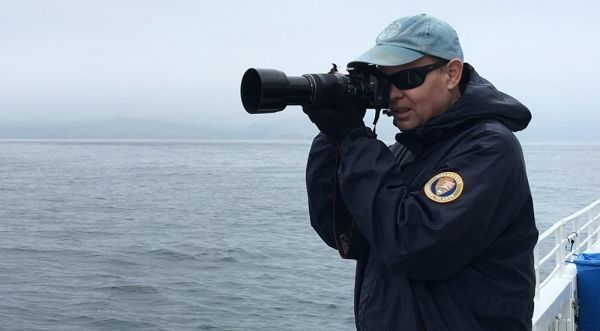A volunteer stands on the front deck of a whale watching vessel and captures the perfect photograph of a blue whale tail fluke to send to the Cascadia Research Collective. Another volunteer standing next to her logs the whale species and their behavior into the Spotter Pro app, which also locks in the GPS coordinates of the marine mammal sighting. In between sightings during this four-hour whale watching excursion, these volunteers walk around the vessel sharing knowledge of the natural history of the Santa Barbara Channel and Channel Islands National Marine Sanctuary and National Park and answer questions from residents and visitors.
These particular volunteers are members of the Channel Islands Naturalist Corps – just one of the many citizen science programs that takes place throughout the National Marine Sanctuary System. Volunteers are trained to conduct citizen science on marine mammal field identification and general research. The data they collect are used in near real-time to help understand the population dynamics of these endangered marine mammals in the Santa Barbara Channel. The data also support NOAA and Channel Islands National Marine Sanctuary’s efforts to reduce the risk of ship strikes (where container ships accidentally hit large whales), since the data document the travel patterns of large whales in the Santa Barbara Channel on a yearly basis. This program is an example of how just a couple of citizen scientists’ volunteering efforts can contribute to resource protection and monitoring.
National marine sanctuaries are living laboratories where volunteers can get involved to ensure these underwater parks are protected now and for future generations. Our citizen science volunteers get the opportunity to learn from world-renowned scientists, gain experience communicating the importance of our natural world to visitors, and join a community of people with science interests.
Continue reading at NOAA.
Image via NOAA.


